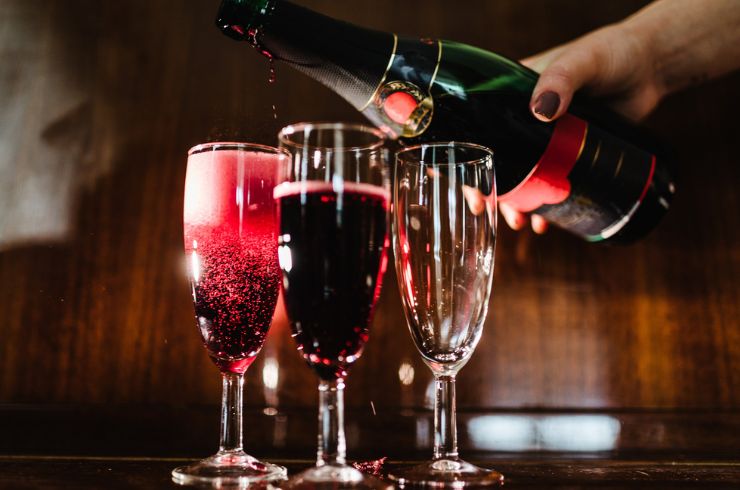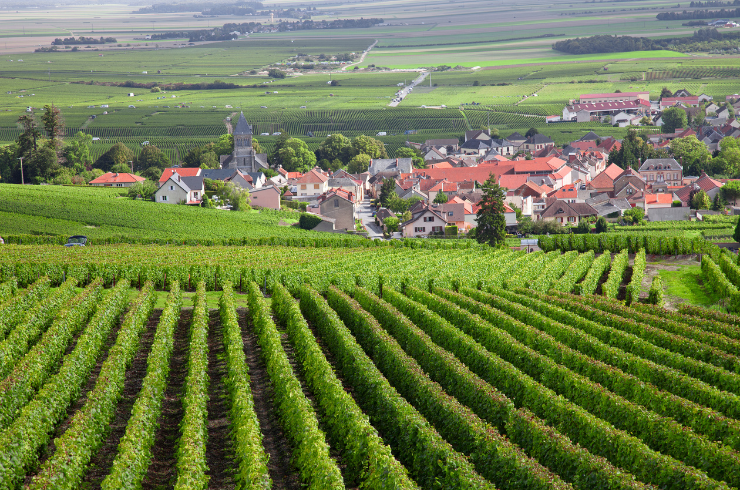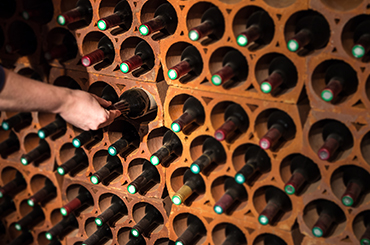While anecdotal hearsay suggests that more than 98 per cent of wine the world over is consumed within 24 hours of purchase, cellaring remains an important conduit to a wine’s soul. Or at least to the soul of high-quality wine. After all, earlier consumption trends dictate that for the vast majority of wine, the meanders of acidity and tannin are nipped and tucked into a guise of effusive fruit, polish and imminent drinkability.
Thus, quality wine with the capacity to age – deserved of time and space in your cellar – can mean spending a bit more than usual. Why? To ensure poise between optimally ripe grapes, fresh acidity, sensitive oak handling and confidently extracted structural elements, chiefly grape tannins. This confluence of factors chaperones a wine into a halcyon twilight of maturity, when it transcends fruit descriptives to reveal an inimitable grace that speaks of place and those who care for it.
That is not to say that all quality wine demands extended cellaring. While the stiff-upper-lipped astringency of top-drawer cabernet from Bordeaux, Coonawarra, the Yarra Valley or Margaret River is likely to reward Zen-like patience, varieties such as gamay, grenache or pinot noir often only require short- to mid-term cellaring. At this point, primary fruit morphs into an earthy scent that is as carnal as it is delicious, without sacrificing the vivacity inherent to each variety’s personality.
The key to a balanced cellar, therefore, is diversity: having a swag of wines to drink across a five- to eight-year window, alongside styles that are destined to age longer. It is best to buy in cases, so a bottle from any allotment can be tried every six months to a year to check its evolution. Rather than considering anything opened a bit early a waste, see it as an insight into the process of ageing wine and the idiosyncrasies of cellaring the stuff. Because while the process of ageing can be explained, the perfect time to open a given bottle cannot. Aside to say that if you wait too long, the fruit will dissipate, and the wine will feel ‘dried out’.
During the process of ageing, a wine’s tannins and other polyphenols bind and attenuate, falling from solution as they grow heavier. Subsequently, the wine becomes more supple. Aromatic and flavour compounds, too, change and veer toward the savoury. Gradual oxygen ingress through a wine’s closure (yes, screwcaps are less porous, but still porous) is the facilitator. To ensure that this occurs, a steady temperature (13-15 degrees), minimal light and sufficient humidity (to ensure that corks do not dry out and compromise their sealing capacity) are important considerations.
The Barossa, McLaren Vale, Clare and Eden Valleys boast some iconic wines, many seen as intrinsic to an Australian cellar. Henschke Hill of Grace, Wendouree’s various iterations and certain Penfolds’ cuvees, to state the obvious. That said, for a drinker that often prefers European expressions of syrah, the hot climate in those parts tends to sublimate the floral aromas and freshness of the grape. I am frequently more intrigued by mataro, a burly and highly age-worthy variety in its southern French home of Bandol where it is called mourvedre. Mataro is being given more love in Australia after many plantings fell victim to the maligned Vine Pull Scheme.
Perhaps Australia’s most refined syrah hails from the granitic scree running from the Canberra District to the sub-alpine reaches of Beechworth. Think wines from Clonakilla, Collector, Savaterre, Giaconda and the sublime Castagna.
Wines for earlier to mid-term enjoyment include any number of top-tier pinot noir, grenache from high performers Yangarra and Thistledown, along with the legion of Italianate styles that are coming on stream. After all, the best Italian wines crafted with the likes of sangiovese, nebbiolo, aglianico and montepulciano can age magnificently. It will be interesting to keep track of Australian expressions of these varieties as vineyards mature, clonal options diversify, and we learn what grows best where. One thing is for sure – many represent the future of Australian viticulture.
What about whites? For longer cellaring, Hunter semillon is a no-brainer. An alchemic transformation occurs from the brittle neutrality of youth to textural wines exuding aromas of lanolin, citrus marmalade and buttered toast. Australian riesling has its fans, while top chardonnay develops well in the mid-term. However, among the most compelling of aged Australian wines experienced include Bordeaux-inspired blends of semillon and sauvignon with some barrel work: Mount Mary Triolet and Sorrenberg Sauvignon Semillon spring to mind.
On a different note, I recall discovering some Sorrenberg Gamay in the cellar after a 10-year absence from Australia. It was among the most beguiling aged Australian wines yet tasted, with great length, complexity and drinkability, and its aromas all porcini, forest floor and hung game.
For international wines, consider Barolo, Barbaresco, Taurasi, Brunello, northern and southern Rhone, Bordeaux, Loire whites, German riesling, Champagne and Burgundy, which while pinot noir, is often assertive enough to justify both patience and the funds required to buy it.
Thus, quality wine with the capacity to age – deserved of time and space in your cellar – can mean spending a bit more than usual. Why? To ensure poise between optimally ripe grapes, fresh acidity, sensitive oak handling and confidently extracted structural elements, chiefly grape tannins. This confluence of factors chaperones a wine into a halcyon twilight of maturity, when it transcends fruit descriptives to reveal an inimitable grace that speaks of place and those who care for it.
That is not to say that all quality wine demands extended cellaring. While the stiff-upper-lipped astringency of top-drawer cabernet from Bordeaux, Coonawarra, the Yarra Valley or Margaret River is likely to reward Zen-like patience, varieties such as gamay, grenache or pinot noir often only require short- to mid-term cellaring. At this point, primary fruit morphs into an earthy scent that is as carnal as it is delicious, without sacrificing the vivacity inherent to each variety’s personality.
The key to a balanced cellar, therefore, is diversity: having a swag of wines to drink across a five- to eight-year window, alongside styles that are destined to age longer. It is best to buy in cases, so a bottle from any allotment can be tried every six months to a year to check its evolution. Rather than considering anything opened a bit early a waste, see it as an insight into the process of ageing wine and the idiosyncrasies of cellaring the stuff. Because while the process of ageing can be explained, the perfect time to open a given bottle cannot. Aside to say that if you wait too long, the fruit will dissipate, and the wine will feel ‘dried out’.
During the process of ageing, a wine’s tannins and other polyphenols bind and attenuate, falling from solution as they grow heavier. Subsequently, the wine becomes more supple. Aromatic and flavour compounds, too, change and veer toward the savoury. Gradual oxygen ingress through a wine’s closure (yes, screwcaps are less porous, but still porous) is the facilitator. To ensure that this occurs, a steady temperature (13-15 degrees), minimal light and sufficient humidity (to ensure that corks do not dry out and compromise their sealing capacity) are important considerations.
What to cellar?
It stands to reason that wines endowed with ample tannins and acidity benefit from longer-term cellaring. On domestic shores, these include better cabernet and blends and certainly shiraz/syrah (although its natural tannic kit is less than cabernet), particularly from the Hunter where a more savoury, firm, mid-weighted style rules the roost. Tyrrell’s top shiraz wines are on an inexorable rise!The Barossa, McLaren Vale, Clare and Eden Valleys boast some iconic wines, many seen as intrinsic to an Australian cellar. Henschke Hill of Grace, Wendouree’s various iterations and certain Penfolds’ cuvees, to state the obvious. That said, for a drinker that often prefers European expressions of syrah, the hot climate in those parts tends to sublimate the floral aromas and freshness of the grape. I am frequently more intrigued by mataro, a burly and highly age-worthy variety in its southern French home of Bandol where it is called mourvedre. Mataro is being given more love in Australia after many plantings fell victim to the maligned Vine Pull Scheme.
Perhaps Australia’s most refined syrah hails from the granitic scree running from the Canberra District to the sub-alpine reaches of Beechworth. Think wines from Clonakilla, Collector, Savaterre, Giaconda and the sublime Castagna.
Wines for earlier to mid-term enjoyment include any number of top-tier pinot noir, grenache from high performers Yangarra and Thistledown, along with the legion of Italianate styles that are coming on stream. After all, the best Italian wines crafted with the likes of sangiovese, nebbiolo, aglianico and montepulciano can age magnificently. It will be interesting to keep track of Australian expressions of these varieties as vineyards mature, clonal options diversify, and we learn what grows best where. One thing is for sure – many represent the future of Australian viticulture.
What about whites? For longer cellaring, Hunter semillon is a no-brainer. An alchemic transformation occurs from the brittle neutrality of youth to textural wines exuding aromas of lanolin, citrus marmalade and buttered toast. Australian riesling has its fans, while top chardonnay develops well in the mid-term. However, among the most compelling of aged Australian wines experienced include Bordeaux-inspired blends of semillon and sauvignon with some barrel work: Mount Mary Triolet and Sorrenberg Sauvignon Semillon spring to mind.
On a different note, I recall discovering some Sorrenberg Gamay in the cellar after a 10-year absence from Australia. It was among the most beguiling aged Australian wines yet tasted, with great length, complexity and drinkability, and its aromas all porcini, forest floor and hung game.
For international wines, consider Barolo, Barbaresco, Taurasi, Brunello, northern and southern Rhone, Bordeaux, Loire whites, German riesling, Champagne and Burgundy, which while pinot noir, is often assertive enough to justify both patience and the funds required to buy it.





